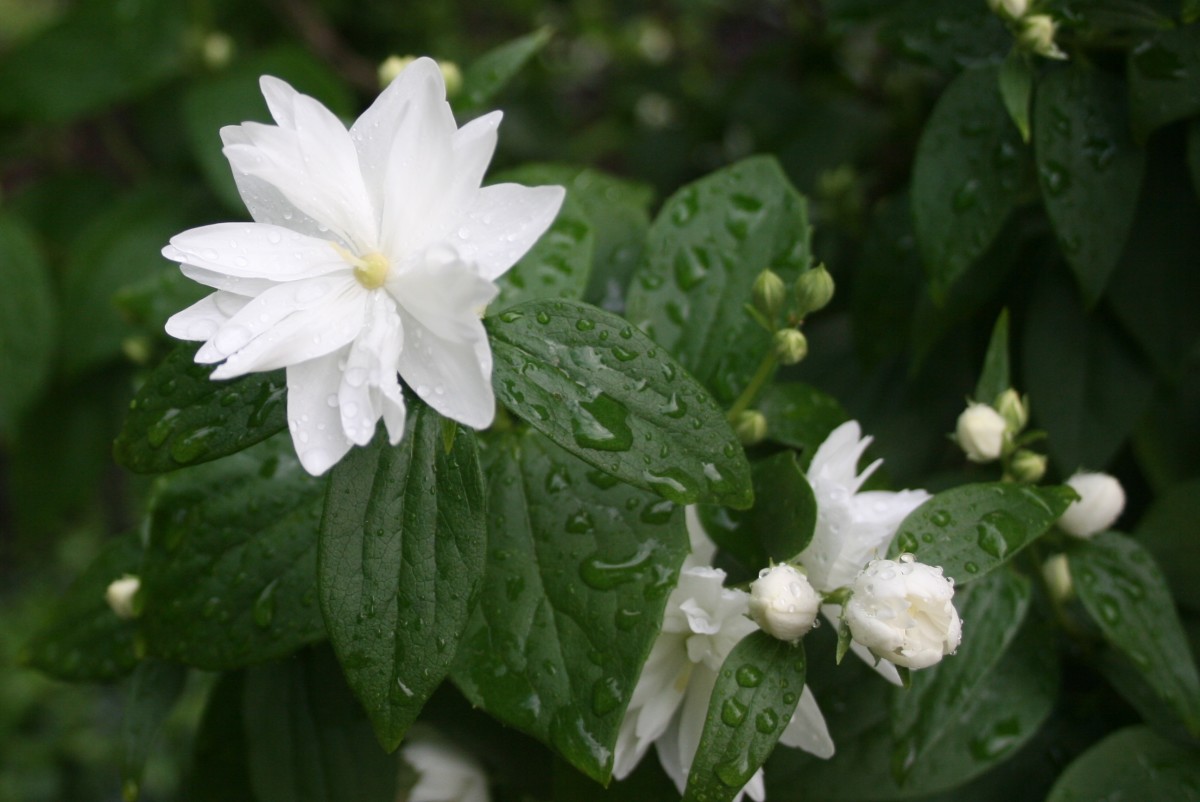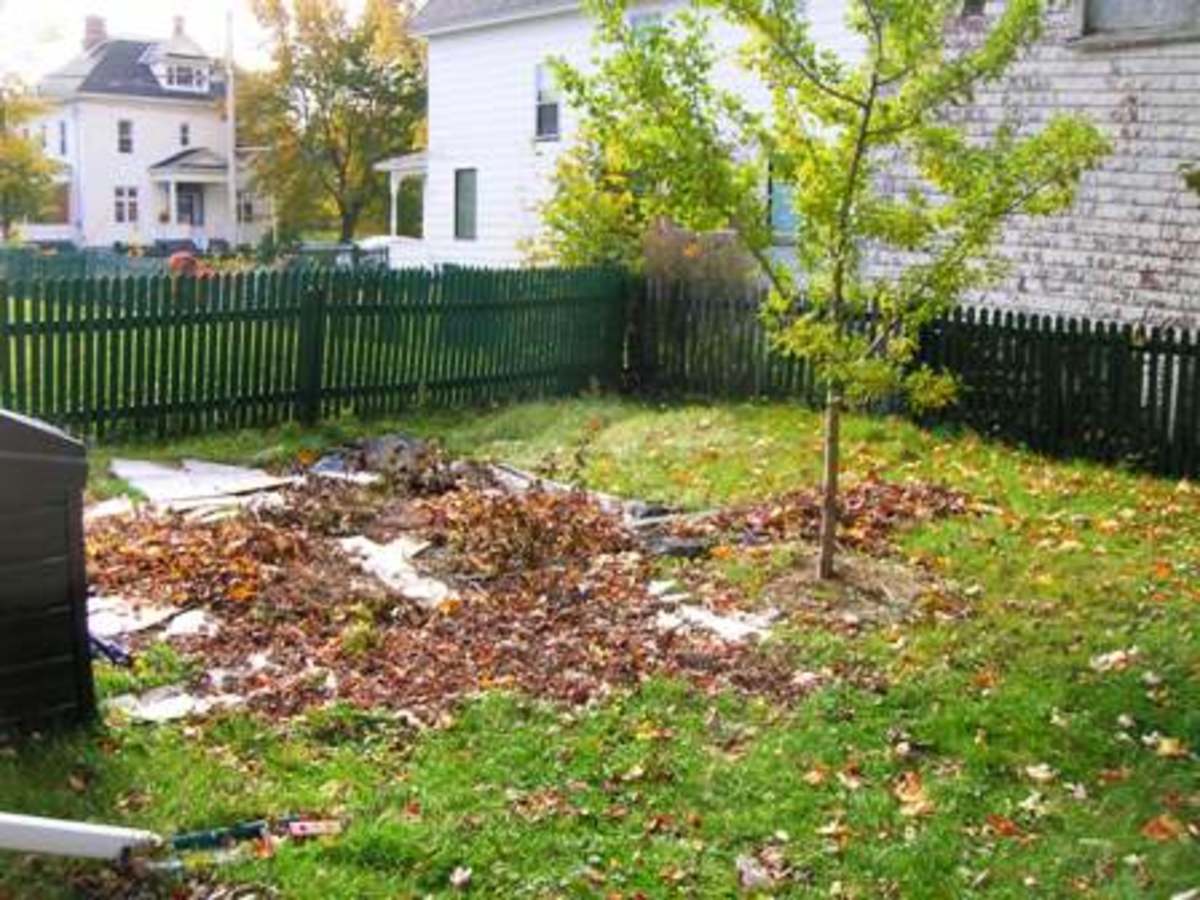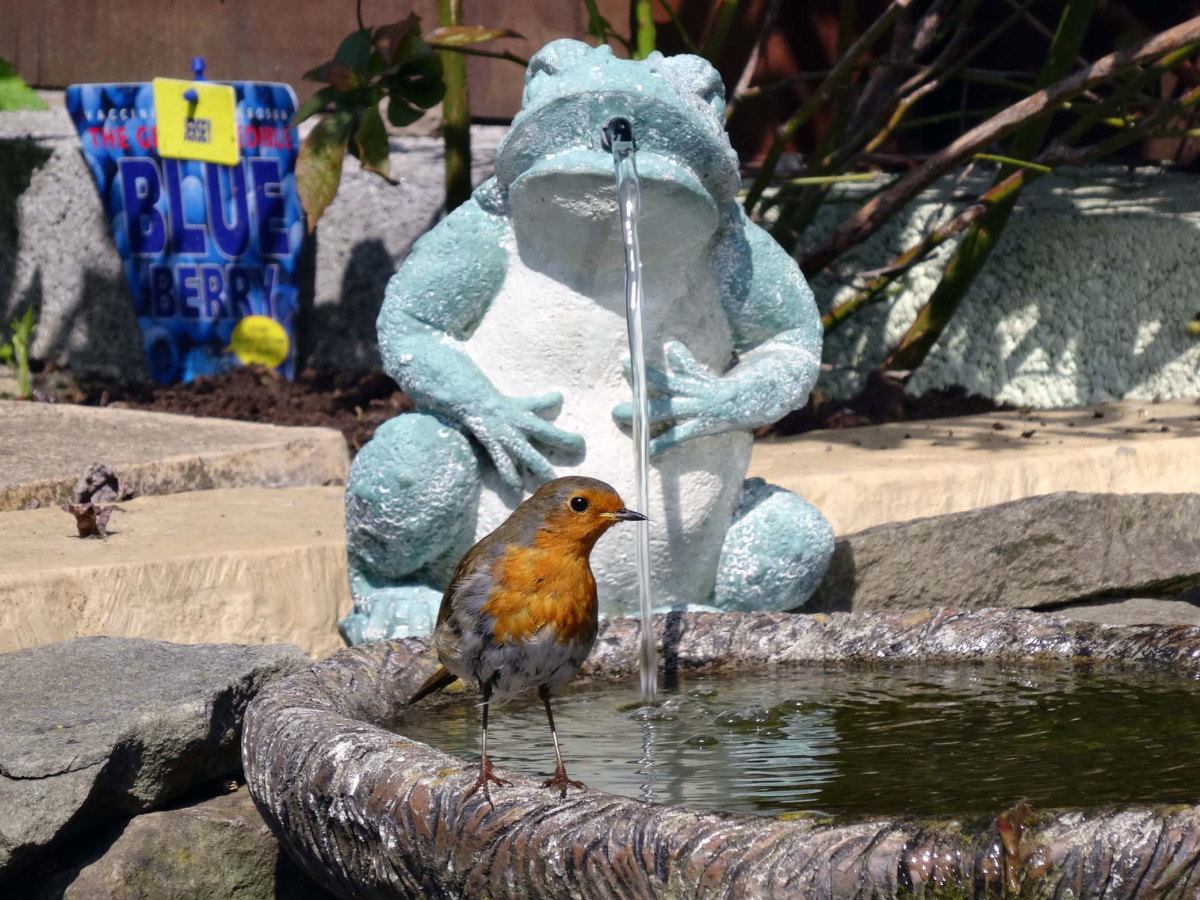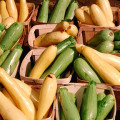Drought-Proofing Your Garden
Regular droughts are a serious problem for many gardeners in most regions of the United States. Droughts stress your plants, leaving them vulnerable to pests, diseases, and other damage. In severe cases, droughts can even kill your plants.
Droughts often affect gardens severely because not only are the plants not getting any rainwater, there may also be water restrictions set down by the city or town that means they're not getting water from sprinklers and other man-made sources either.
This article shares some tips for how to prepare your garden for drought. In most regions of the United states, it's not a question of if drought will come, it's when. Preparing your garden in advance will help it survive all but the longest and most severe droughts with minimal damage.

Choose Plants Wisely
The single most important thing you can do is to choose your plants wisely.
In general, the best choices for gardeners in drought-prone regions are native plants. Native plants have evolved to survive the specific conditions of your local region, including drought. In most regions, well-sited native plants require no watering at all once they are established (usually only one growing season).
When choosing non-native plants, look for plants that grow in areas relatively similar to your own. For example, many species from the Mediterranean region of Europe do beautifully in southern California, while a plant from the jungles of Southeast Asia might prefer the more humid climate of Florida.
If you have some particular favorite plants that are not drought hardy, plant them close to the house, where it is easier to tend closely to them during droughts, and plant hardier natives farther away. Another option is to look for more drought hardy relatives of your favorite plants. For example, if you love hybrid tea roses but live in a drought prone region, consider growing Rugosa roses or wild roses instead.
- Choosing an Alternative Lawn
Alternative lawns can range from a traditional bluegrass or bermuda grass lawn managed organically, to alternative turf grasses or groundcovers, to a full-scale habitat restoration or permaculture project, with many options in between.
Rethink Your Lawn
One of the thirstiest features of most American gardens is the lawn. The American lawn is modeled after the lush, beautiful lawns maintained on the aristocratic estates of England. Unfortunately, very few parts of the United States actually have a climate that even remotely resembles that of Merrye Olde Englande, so in order to maintain the same look, most Americans have to water our lawns weekly if not daily for most of the summer, driving up our water bills and worsening water shortages during drought.
A more sensible alternative would be to get rid of our lawns entirely and plant gardens that more closely resemble our own native ecosystems: woodlands in the Northeast and Southeast, prairies in the Midwest, deserts in the Southwest, etc.
If you really love your lawn, however, consider simply replacing it with a more drought hardy turf grass instead. Bermuda grass and Kentucky blue grass, the two most popular turf grasses in much of the United States, are both cool season grasses. That means they are biologically programmed to be lush and green in the cooler spring and fall months and to go brown and dormant in the hot summer, unless they are watered frequently. Warm season grasses, on the other hand, are slower to green up in the spring, but stay lush and green all summer with minimal watering. A few great warm season turf grasses for many regions of the US are zoysia and buffalograss (one of our native shortgrass prairie plants).
If you really love your cool season grasses, help them develop deeper roots by watering more deeply less often and start setting your blades higher when you mow. Keeping your grass 3-4 inches high shades the soil more and helps prevent evaporation, reducing your need to water.
Improve Your Soil
Another of the most important things you can do to drought proof your garden is to improve the soil by adding organic matter.
Organic matter improves soil structure and increases both the soil's drainage ability and its ability to hold water, so if you live in the Midwest like me, soil high in organic content will not only keep your plants lush and green longer in droughts, a few years later it will keep your basement dry longer in floods!
For example, one of the finest forms of organic matter you can add to your soil is leaf mold, which hold six times its own weight in water. The leaf mold acts like a sponge, sucking water up quickly when it rains, but releasing it slowly, little by little, to the surrounding soil, where plants can utilize it. You can create leaf mold easily and completely free by corralling your autumn leaves together in a cool, shaded location and letting them sit for a year or two.
Composting and sheet mulching are also great ways of ensuring a steady supply of organic matter to your soil.
Mulch, Mulch, Mulch
Mulching helps the soil in several ways.
First, it helps shade it and protect it from the sun, reducing evaporation and keeping the soil moist for longer between waterings.
Second, if you mulch with organic materials such as bark or straw (and I recommend that you do), it adds that all-important organic matter to the soil.
Finally, mulch increases your population of earthworms, the single best friend of any gardener, by providing them with food and protecting them from temperature extremes. Earthworms can be killed if the soil gets too hot or too cold, so they typically spend summer and winter alike burrowed deep down in the soil where the temperature remains fairly steady year round. Mulch helps moderate the temperature so earthworms can remain active in the topsoil for more of the year, improving your soil faster and helping protect against drought.
Water Wisely
A final thing to do in preparation for drought is to practice good watering habits.
A common mistake made when watering is to water plants frequently, but shallowly. This encourages the development of shallow root systems, which are more susceptible to drought. Plants with deep root systems can burrow far into the soil to gather as much available moisture as possible during dry periods. Plants with shallow root systems are trapped in the topsoil, which dries out the fastest anyway, quickly leading to dried out roots and stressed plants. Instead of frequent, shallow waterings, water your plants deeply but infrequently. Depending on where you live, that may mean watering once a week instead of every other day, or it may mean every other day instead of every day. If your plants are drought-hardy natives, try to avoid watering them entirely once they have become established. Keep an eye on them for signs of thirstiness, but you may be astonished at how long an established, drought hardy plant can go without water.
If you can afford one, a drip irrigation system is a great way to ensure that your plants are watered deeply enough while simultaneously conserving water. Drip irrigation systems water the soil directly at a very slow pace, greatly reducing the amount of water lost to evaporation. Drip irrigation systems are especially good choices for beds with drought sensitive plants, such as vegetable gardens and exotics from moister climates.
You can also create a cheap do-it-yourself drip irrigation system by punching a few small holes in an old milk carton and digging it into the soil near a drought sensitive plant so only the top shows (being careful not to damage the roots). Refill the carton as necessary to ensure the plant gets an even and steady water supply.
Another consideration is where you get your water. In many drought-prone regions such as California and the Southwest, more and more people are collecting rainwater in rain barrels or cisterns to use for watering. Although this source of water will eventually run out during extended droughts, it will keep your garden healthier and happier for much longer.
In areas where it is allowed, many gardeners have also had success with greywater lagoons, which use water from laundry machines, baths, and dishwashers (but not toilets) to support a thriving water garden even during times of severe drought.












